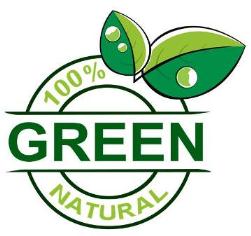Rug Cleaning Service
Rugs such as area rugs require special care. Similar to upholstery cleaning, using the right chemicals for rug cleaning is highly essential. At Might Clean, most of the rugs that we offer cleaning services for are 100% wool. One of the largest wool product manufacturer is New Zealand and their guidelines for wool rug cleaning suggests that rugs should not be cleaned with PH level that is over 9 and temperature should be lower than 175°. If anything other kind of chemical is used for cleaning, it will lead to fiber damage and loss of colour. Thus, at Mighty Clean we ensure that we follow the proper rug cleaning guidelines to avoid any damage to the rugs.
- Inspection
Rug cleaning process begins with inspection. While most of the rugs are 100% woolen, some may be machine manufactured olefin or nylon rugs. We also deal with silk rugs. Cleaning process is based on the type of fiber we are dealing with, as the cleaning methods vary. Each fiber requires cleaning based on its own characteristics. Our team of specialists determine whether the rug is machine made or hand made during inspection. If a rug is hand-made, we work carefully, looking for unique colour variations in the rug that would become more obvious after the cleaning process.
- Dry soil removal
One of the beginning processes when we are cleaning a rug is to remove as much soil as possible. This is done before we wet clean a rug. Most of the area rugs accumulate and trap huge amounts of soil in extremely dense piles. We have industrial strength, commercial grade vacuum system that we use to clean the rug multiple times to ensure soil and dust has been removed completely.
- Pre-Spotting
This cleaning step is crucial in treating stains such as food stains that cannot be removed through normal cleaning methods. During this process, we use enzyme deodorizers to apply to urine soaked areas.
- Pre-conditioning
Preconditioning the fringes is an important aspect of cleaning rugs. We start with preconditioning fringes that are made of cotton, and where soil is more visible. Fringes are soaked, and while that happens, we precondition the rug itself by using pre-conditioner that matches the fiber type and soil level.
- Agitation
Another important step in rug cleaning process is the agitation of fibers in order to remove oil based stains and grease. However, agitation step is skipped for silk rugs, as it could leave visible marks on such rugs.
- Rinse and extraction
Rugs and its fringes are rinsed several times to make sure that any residue, whether it is soil or even shampoo, have been removed completely. We work carefully to extract rug to remove as much moisture as possible in order to avoid leaving any mark.
- Post-treatment
At this cleaning stage, we usually re-clean the fringes and look closely to ensure that there are no spots remaining that require additional cleaning. It is at this point that the rug is groomed to set the nap in the right direction.
- Protection treatment
Many at times rugs are placed in areas where there is frequent beverage or food spills. In such cases we recommend applying stain resistance treatment. We generally use Teflon for wool rugs.
- Drying Process
Rugs are finally dried with the use of powerful blowers that help speed up the drying process and reduce drying time.
Q. Can you clean rugs in the home?
The answer to that question requires some explanation. Generally we only clean synthetic rugs such as olefin and nylon in the house. Natural-fiber rugs such as those made of wool may bleed colours when wet, thus leaving a permanent stain on your carpet. Also, it is nearly impossible to clean fringes at home since they require soaking and hang drying. Thus, we prefer to clean rugs at our facility to ensure proper cleaning. The rugs are returned to you within a few days and with noticeable results.





